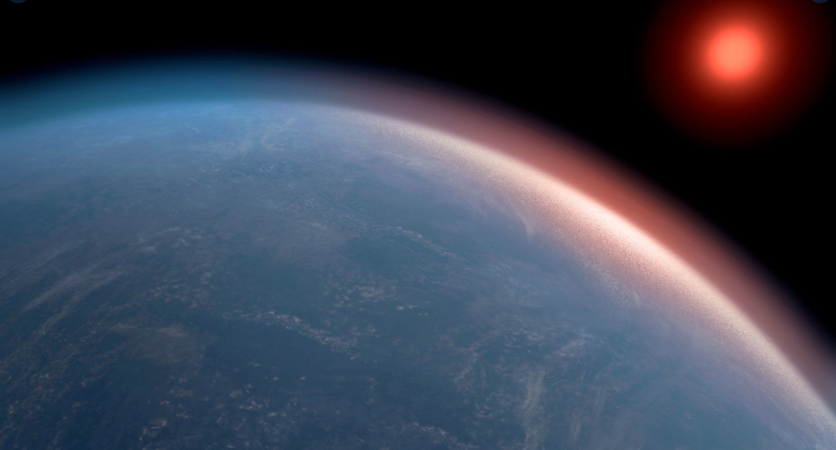
Scientists have investigated and believed that exoplanet K2-18b that it can sustain and support humans under the right conditions.
What's the Planet Like?
The planet which is located 124 light-years away is about 2.6 times larger than the Earth, imagine all that real estate! The exoplanet K2-18b has revealed that the distant world could potentially harbor in the right conditions for life to exist. It currently orbits a red dwarf star which is about 110 light-years from Earth. Even though the red dwarf star is much cooler than our sun it still emits the same heat and liquid water can be stable as well on the planet's surface. Thus, it sits in the habitable zone of the star.
A team that is led by Nikku Madhusudhan from the University of Cambridge located in the U.K. has again analyzed K2-18B's mass, radius, and atmospheric data and concluded that it is "potentially habitable," from the study published here at The Astrophysical Journal Letters.
"There is a reasonable chance that the planet hosts a large ocean underneath the atmosphere at pressures and temperatures similar to those in the Earth's oceans,".
Read More About: Is There A New Place on Earth? Melting Ice Caps Uncovers Antarctica's Hidden Island
What Could This Mean?
It is interesting to speculate that if this is indeed prime for life, the possibilities for mankind can be exponential. As previously stated above that this is a planet similar to the size of Neptune which is larger than our little blue planet. It is 2.6 times the size of Earth as well as 8.6 times its mass. Mankind would not have problems spreading out on this planet and making it possible to end some problems we have here on our Earth. Like overpopulation, pollution and many more that comes with humans being close to one another.
Are There Other Planets That Show Potential?
As Madhusudhan said: "This suggests that habitable conditions can be present in exoplanets that are significantly larger than previously assumed and that our search for life elsewhere should not necessarily be restricted to Earth-size exoplanets,".
"We also found that the planet has an atmosphere rich in molecular hydrogen with a significant amount of water vapor, confirming previous studies. However, we found that the concentrations of other gases such as methane and ammonia were significantly lower than expected at these temperatures. It is unclear if biological processes could be responsible for such depletion," he added.
Other planets located in the "habitable zone" are also going to be looked at further and especially the planet designated K2-18b with the help of the up and coming James Web Telescope which will provide more detailed information.
As NASA is already making strides for the Artemis project, it is only a matter of time that we can imagine a future that mankind will conquer the stars in the near millennia.




![Most Useful Google Chrome Keyboard Shortcuts You Need to Know to Improve Your Browsing Experience [2024]](https://d.techtimes.com/en/full/449047/most-useful-google-chrome-keyboard-shortcuts-you-need-know-improve-your-browsing-experience-2024.jpg?w=184&h=103&f=476d29fd60df70a67f6679f99a2ca6d0)